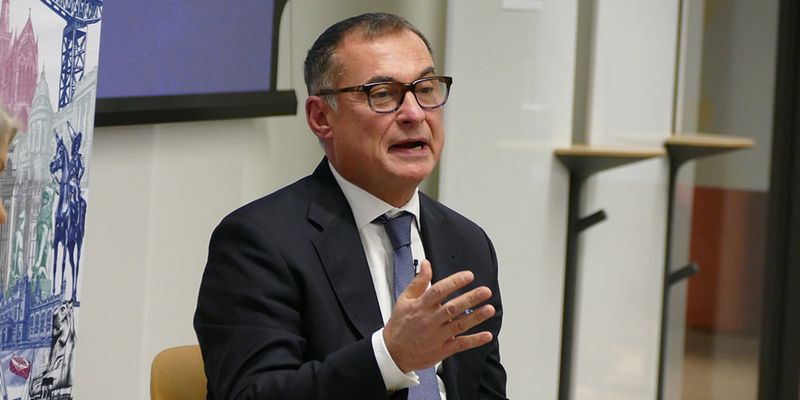The Push for Control: Europe’s CBDC Strategy Unveiled
In a revealing session at the London School of Economics, Deutsche Bundesbank President Joachim Nagel has made an assertive case for implementing Central Bank Digital Currencies (CBDCs), framing them as crucial for European sovereignty. The timing of these statements, just ten days before a German general election and amid economic stagnation, adds significant weight to this policy direction.
“CBDCs will play a role in future resilience [of Europe],” Nagel emphasized, directly tying digital currency to European sovereignty. This statement comes at a particularly sensitive time, with Germany facing what Nagel describes as “stagnation” and projected economic growth of merely 0.2% this year.
The Bundesbank president’s concerns about U.S. influence in the global payments sector were notably specific. He warned that private sector actors, particularly from the United States, could “be used in a digital environment as a form of weapon,” highlighting Europe’s perceived vulnerability in the digital financial sphere.
Economic Headwinds: Why Germany’s Digital Currency Push Comes Now
On the cryptocurrency front, Nagel maintained a distinctly skeptical stance, particularly regarding Bitcoin. “This is not something central banks should look at. This is not a liquid form of something you want on the balance sheet. We should be very cautious here,” he stated firmly, describing Bitcoin as a “digital tulip” and “the opposite of transparent.”
Notably, Nagel’s presentation included several key economic insights:
- The ECB’s benchmark rate currently stands at 2.75%, with a neutral rate estimated around 2-2.25%
- Inflation in the euro area is expected to fall to the ECB’s 2% target by summer
- He warned against being “over-optimistic” about the March ECB rate decision
- The Russia-Ukraine conflict has “fundamentally changed” Europe’s economic landscape
Perhaps most telling was Nagel’s admission that it’s “too early to tell” how CBDCs and digitalization might impact the neutral rate of interest, even while insisting on their necessity as a “public good” that monetary authorities should provide.
The broader context of these statements reveals a complex landscape of monetary policy challenges. With the ECB navigating post-pandemic recovery, geopolitical tensions, and technological transformation, Nagel’s push for CBDCs appears to be part of a larger strategy to maintain European financial autonomy.
His repeated support for “more Europe, not less Europe” and emphasis on capital markets union suggests that the CBDC initiative is part of a broader vision for increased European financial integration and independence. However, the fragmentation in capital markets and the energy sector, which Nagel cited as deterrents to foreign investment, presents significant challenges to this vision.
As these developments unfold, the tension between centralized control and financial innovation continues to shape the future of European monetary policy. While presented as a solution to external threats, the push for CBDCs raises important questions about the balance between financial sovereignty and individual economic freedom in the digital age.
Two Monetary Systems: Transatlantic Digital Currency Divide
This stark divergence between European and American approaches to CBDCs highlights a fascinating split in global financial policy. While Bundesbank’s Nagel pushes for greater centralized control through CBDCs, citing European sovereignty, Trump’s Treasury Secretary nominee Scott Bessent has taken precisely the opposite stance, declaring “a central bank digital currency is for countries who have no other investment alternatives.”
This transatlantic divide on digital currency policy could create significant tensions in global financial markets. With Germany pushing toward greater state control of digital finance and the U.S. Treasury potentially embracing a more market-driven approach under Bessent, who notably stated “Crypto is about freedom,” we’re witnessing the emergence of two fundamentally different visions for the future of money.
This policy schism between major economic powers could reshape not just monetary policy, but the very nature of financial sovereignty in the digital age.
Source: OMFIF
























